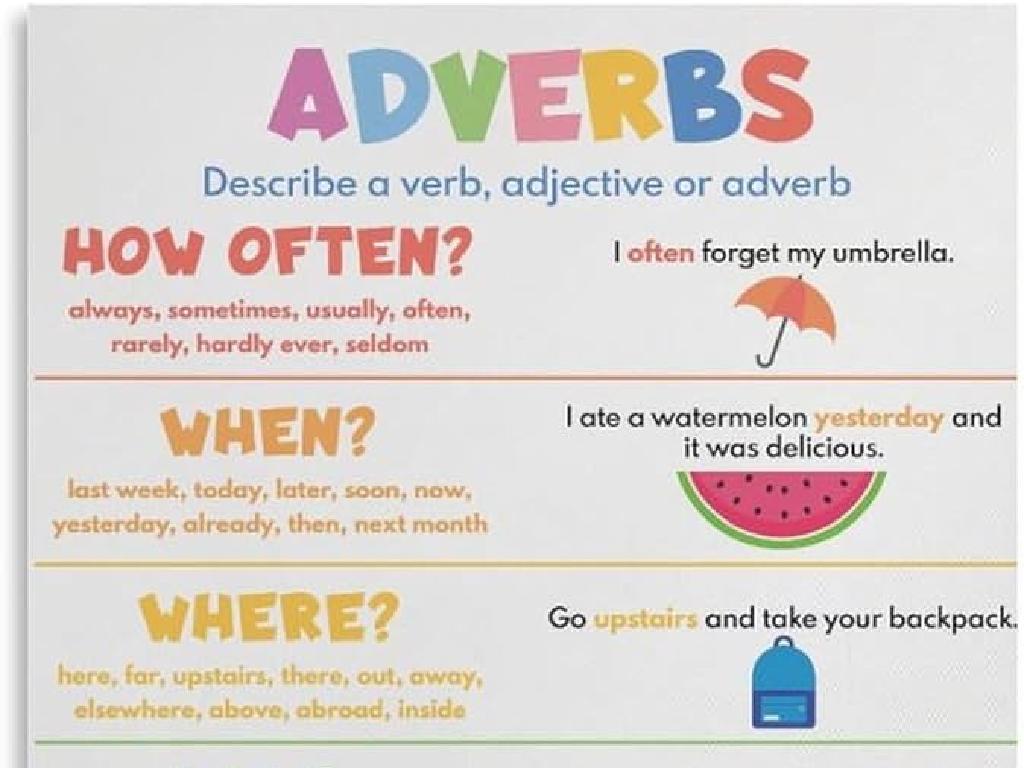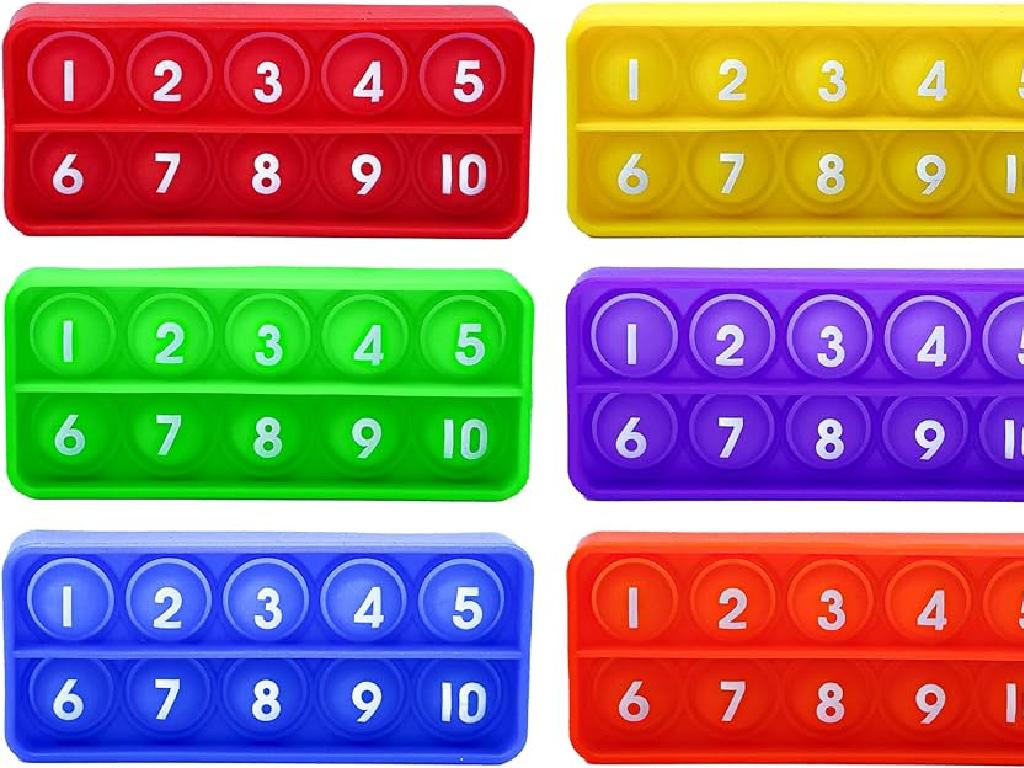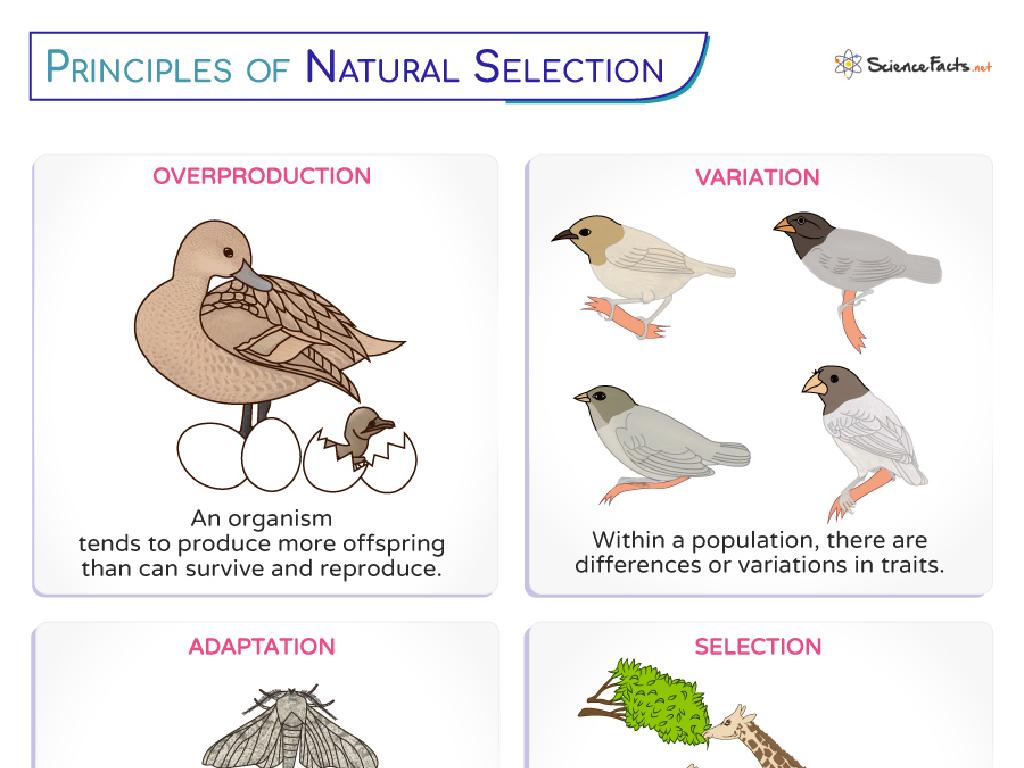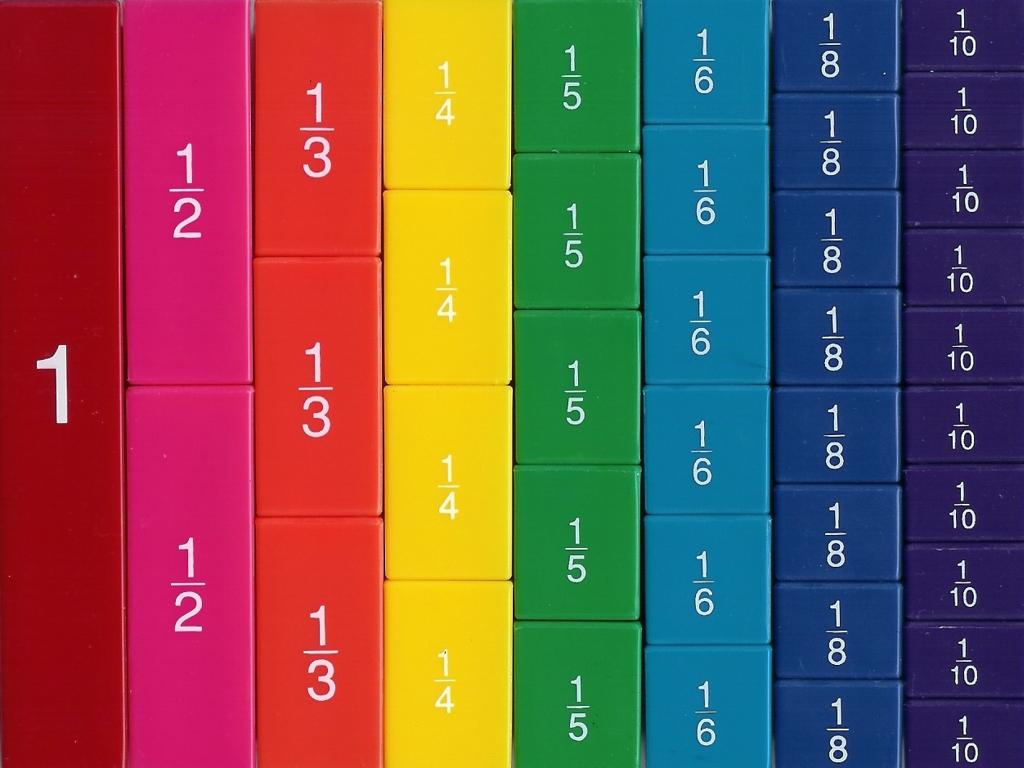How Do We Use Light And Sound To Communicate?
Subject: Science
Grade: Kindergarten
Topic: Light And Sound
Please LOG IN to download the presentation. Access is available to registered users only.
View More Content
Welcome to Light and Sound!
– Greeting with smiles and hellos
– Today’s topic: Communicating with light and sound
– Have you used a flashlight?
– Flashlights help us see in the dark and send signals
– Have you listened to music?
– Music and words are sounds that share feelings and ideas
|
Begin the class with an enthusiastic greeting to engage the students. Introduce the topic of how light and sound are used in communication, making it relatable to their experiences. Ask them about their use of flashlights, perhaps during a power outage or for playing games, and discuss how light can send messages, like turning on and off to signal someone. Then, transition to sound by discussing how we enjoy and share music, and how we use words to express ourselves. This will set the stage for exploring the various ways light and sound play a crucial role in everyday communication.
Exploring Light in Communication
– Light helps us see
– Without light, it’s like playing hide and seek in the dark!
– Light comes from different sources
– The sun, flashlights, and light bulbs all give us light.
– Light can send signals
– Like a flashlight: on means ‘hello’, off means ‘bye-bye’.
|
This slide introduces the concept of light to Kindergarten students and how it is essential for sight and communication. Begin by explaining that light is the reason we can see everything around us. Use simple examples like playing hide and seek in the dark to illustrate the absence of light. Show them common sources of light such as the sun, which lights up our day, and a flashlight, which we can use when it’s dark. Discuss how light can be used to send messages, like turning a flashlight on and off to signal someone in a fun way. This can be related to how people use light signals in real life, such as traffic lights and lighthouses. Encourage the children to think of other sources of light and how they might be used to communicate.
What is Sound?
– Sound helps us hear
– Sources of sound: instruments and voices
– Drums, guitars, or our singing
– Sound sends messages
– Talking, clapping, or whistling to communicate
– Example: using a whistle
– Whistles in sports or to call pets
|
This slide introduces the concept of sound to Kindergarten students. Begin by explaining that sound is what we hear with our ears. Show them pictures or play sounds of various musical instruments and human voices to illustrate sources of sound. Discuss how we can use different sounds to send messages, such as using our voice to talk or a whistle to signal someone. Provide examples like a referee using a whistle during a game or someone whistling to call a pet. Encourage the children to think of other ways we use sound to communicate and share their ideas.
Using Light to Communicate
– Traffic lights help us stay safe
– Red means stop, green means go, and yellow means slow down.
– Lighthouses warn ships at sea
– The lighthouse light tells ships where the land is so they don’t crash.
– Play a ‘light signals’ game
– We’ll use flashlights to say ‘hello’ and ‘goodbye’ without words.
|
This slide introduces the concept of using light as a means of communication. Start by showing pictures of traffic lights and explaining the meaning of each color. Emphasize how colors communicate messages without words. Then, discuss the purpose of a lighthouse and how its light acts as a warning signal for ships to avoid dangerous areas. For the class activity, guide the children to use flashlights to communicate simple messages, such as turning the light on and off to represent ‘hello’ and ‘goodbye.’ This activity will help them understand the practical use of light signals. Make sure to supervise the activity closely to ensure safety and participation from all students.
Using Sound to Communicate
– Bells signal class start
– Megaphones for loud announcements
– Animals talk using sounds
– Like how birds chirp to say ‘hello’ to other birds
– Activity: Message with toy instrument
– Use a toy drum to say ‘come here’ or ‘go there’
|
This slide introduces the concept of using sound for communication. Start by showing how everyday objects like bells and megaphones amplify sound to convey messages such as the beginning of class or important announcements. Discuss how animals use sounds to communicate with each other, such as birds chirping to greet or warn each other. For the activity, provide toy instruments and guide the children to use them to send simple messages to their classmates, such as using a drum to gather attention or a whistle to signal movement. This will help them understand the practical use of sound in communication. Ensure the activity is supervised and that each child gets a turn to participate.
Light and Sound in Our Daily Lives
– Everyday uses of light and sound
– Watching TV, using a flashlight, or hearing a doorbell are some ways we use light and sound every day.
– Share your light and sound examples
– Can you think of when you’ve seen bright lights or heard loud sounds?
– Light and sound help us talk to others
– Talking, listening to music, or seeing someone wave are ways we communicate.
– How do TV and phones use light and sound?
|
This slide aims to introduce Kindergarten students to the concept of communication through light and sound. Start by explaining how light and sound are part of our everyday experiences, such as watching television or hearing a phone ring. Encourage the students to participate by sharing their own examples of light and sound from their daily lives. Reinforce the understanding that these elements are essential for communication, whether it’s talking to someone, listening to instructions, or even using technology like TVs and phones. Use simple, relatable scenarios to illustrate these points, and ensure the children grasp the basic idea that light and sound are tools we use to interact with the world and each other.
Class Activity: Light & Sound Communication Game
– Learn game rules for signals
– Split into groups with roles
– Practice sending messages
– Try using flashlights or hand claps
– Use light and sound to ‘talk’
– Flashlights for light signals, instruments for sound
|
This activity is designed to teach children about communication through light and sound in a fun and interactive way. Start by explaining the rules of the game, making sure the children understand the concept of using light and sound to send messages. Divide the class into small groups and assign roles to each member, ensuring everyone gets a turn to send and receive signals. Provide flashlights and simple musical instruments, and guide the children on how to use them to communicate. For example, one flash could mean ‘hello’ and two flashes could mean ‘goodbye’. Similarly, one drumbeat could mean ‘yes’ and two beats could mean ‘no’. Allow the children to practice sending and receiving messages, and encourage them to come up with their own simple codes. This activity not only teaches about light and sound but also promotes teamwork and the concept of encoding and decoding information.
Fun with Light and Sound!
– Light and sound help us talk
– Like using a flashlight or speaking to a friend
– Share what you learned today
– Fun fact about light and sound
– Did you know fireflies talk using light?
– Say goodbye with a bright smile
|
This slide wraps up the lesson on communication through light and sound. Start by summarizing the key points, such as how we use light signals and sound to convey messages. Encourage the children to talk about what they’ve learned; this reinforces their understanding and allows them to express it in their own words. Share a fun fact, like how fireflies use light to communicate, to end the lesson on an engaging and memorable note. Finally, have the children say goodbye to each other using either a sound (like a friendly ‘bye’) or a light signal (like waving hands) to apply what they’ve learned.





